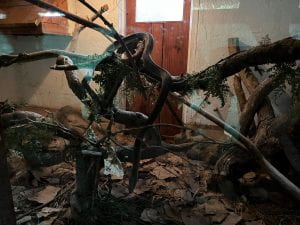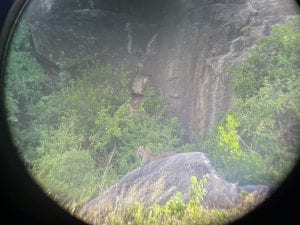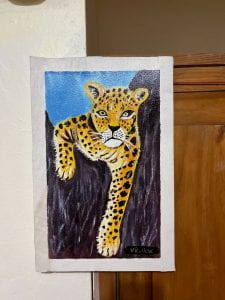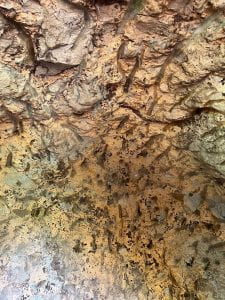
A vulture that has been rescued at the snake park

A pair of crocodiles lounge in the sun at the snake park

A Black Mamba at the snake park

A pair of green mambas at the snake park
As my study abroad program draws to a close, it is hard to believe that I arrived in Tanzania over three months ago. Over the past few weeks we have finished up our directed research, presenting our findings to the local community as well as other stakeholders. The directed research experience I gained here will be very valuable to me moving forward, and I am very glad I had the opportunity to come to Tanzania and do all that I did. As the program comes to a close, we have taken this last week to do a little bit more exploring, and I’ve gotten to see some very interesting things.
The main highlight was a trip to the city of Arusha, where we visited a snake park, Maasai heritage museum, and got to explore the city a little bit. The snake park was probably my favorite part of the day, as we got to see some pretty cool animals. Located close to the city, the facility served as both a small zoo and a snake bite clinic, offering antivenom to those bitten by dangerous snakes. We got to see a wide variety of snakes, including several cobras, pythons, and both black and green mambas. Additionally, the park had several crocodiles, as well as a couple birds that had been rescued and could not be released back into the wild. It was fascinating to see all of these animals up close, especially the birds and crocodiles as we had seen them on safari but never up so close.
The Maasai heritage museum was interesting as well, but after spending a whole day with the Maasai earlier in the semester, I can’t say I learned much more than I already knew. That being said, it was still cool to see the intricate displays built for the museum, showcasing traditional building methods and cultural traditions. After we finished our museum visit, we headed into Arusha to get some lunch and explore the city a little bit. There was certainly some minor culture shock when we got out of our vehicles upon arrival. As we have mainly been working in and around small villages these past couple months, you can imagine the suprise on everyones face when the first sights to greet us were a massive Pizza Hut and a large grocery store. It was definitley fun to explore, and we ended up getting some good Tanzanian food for lunch, making the trip all the better.
As I prepare to head home in just a few days, I spend lots of time thinking about all the fun memories I’ve made over the past semester. I plan on writing one more blog post as a final reflection, so please stay tuned for that in the upcoming weeks. As always, thank you for reading!





























